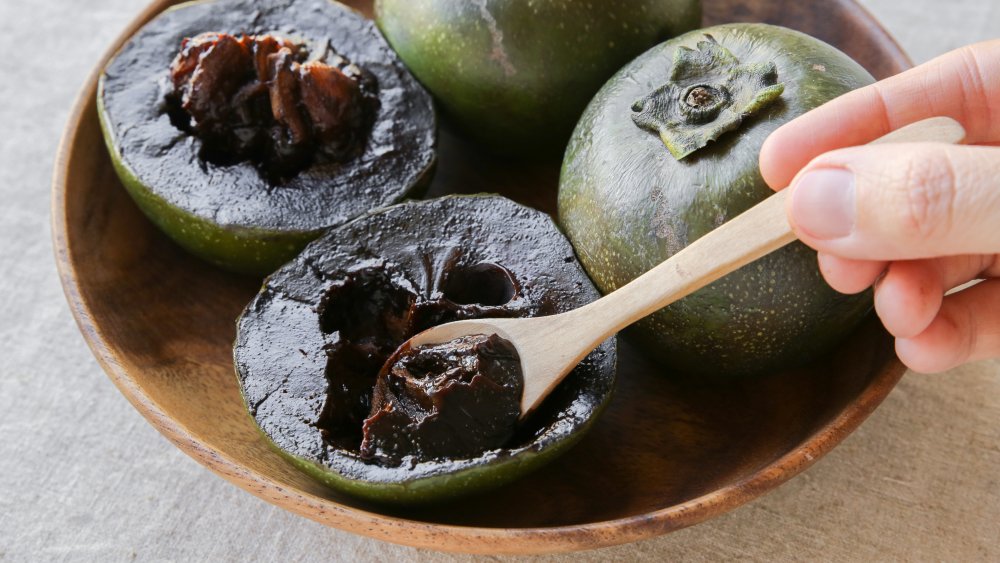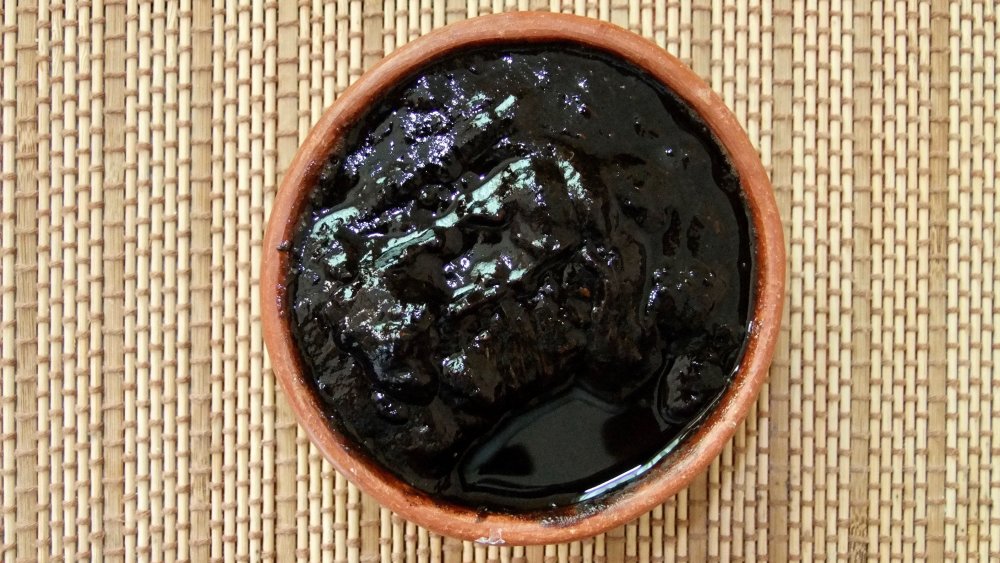The Reason Everyone Compares This Fruit To Chocolate Pudding
Have you ever heard of the black sapote? Neither have we, but you might want to brush up because it is the new "it" fruit that has everyone buzzing and when we tell you what sapote believers are comparing this fruit to, it may have you buzzing as well. Black sapote is a member of the persimmon family but doesn't result in the dreaded puckering of the lips unless you eat it when it's unripe and bitter (via Purdue University). In fact, according to Fine Dining Lovers, the black sapote is often called the chocolate pudding fruit with many people claiming its dark, sticky pulp actually has a taste that resembles chocolate pudding. Sounds too good to be true, but this fruit, which is easily accessible in Central America, has a sweetness to it that will have you wishing they were as readily available in mainstream grocery stores in the U.S.
Clocking in at 134 calories for an approximately 3.2-ounce fruit, the black sapote is lower in calories than many sweet treats while providing 6 times the daily recommended intake of vitamin C and 9 percent of your daily fiber (via A Better Choice). The Guardian notes that the black sapote is best to eat when its appearance is perhaps at its most unattractive stage and the skin has turned from green to a deep dark brown, suggesting that is when the fruit is at its creamiest. But does it really taste like chocolate pudding and how is it eaten?
Black Sapote has essence of honey and caramel flavors
The Guardian explains that while many compare this yummy fruit's taste to chocolate, that's not exactly accurate. And instead, they encourage first-time black sapote consumers to be prepared to discover and experience a range of flavors that include those of honey, caramel, and dates. While this chocolate pudding fruit can be and often is eaten as is, many lovers of the black sapote use it in desserts and bread.
Purdue University's Center for New Crops and Plant Products shares that the black sapote is a classic staple in the Philippines, with the pulp being served up with milk or orange juice. In Florida, consumers are apparently known to blend the pulp with milk and ground nutmeg, while in Central America, the black sapote might be fermented and fashioned into a liqueur similar to brandy. And Tropical Superfood suggests this fruit does well when making yogurt-based smoothies or even ice cream.

